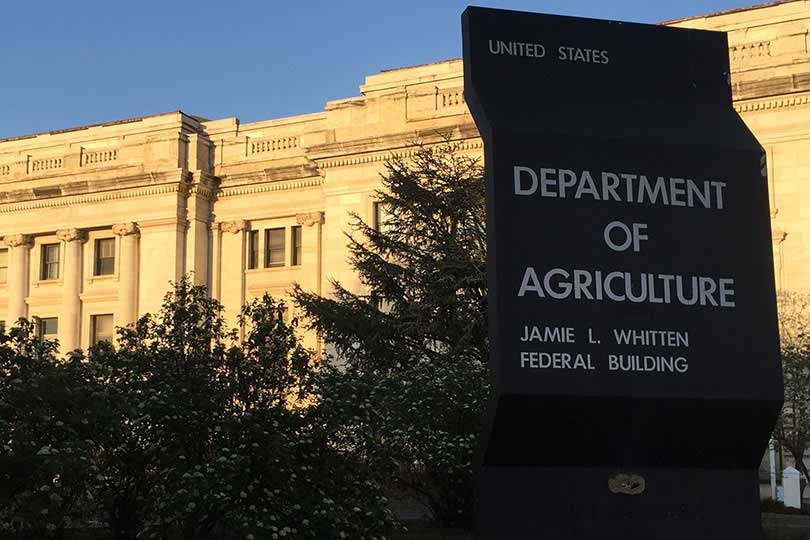By Jessica Domel
Multimedia Reporter
Just hours after President Trump announced a new trade agreement with Mexico, U.S. Secretary of Agriculture Sonny Perdue detailed the administration’s plan to help farmers affected by current trade tensions.
Perdue said the plan will give the president time to strike long-lasting trade deals with China, Canada, the European Union and others who have levied retaliatory tariffs on U.S. agricultural exports.
“All of this keeps with President Trump’s promise that his administration will not stand by while farmers are treated unfairly by countries acting in bad faith,” Perdue said on a conference call with media. “These are the men and women who year after year put their equity on the line and assume the financial risk every time they plant a new crop.”
The plan, administered under the U.S. Department of Agriculture (USDA), involves a three-pronged approach.
The first prong is the Market Facilitation Program (MFP), which will use an estimated $4.7 billion to help farmers due to issues marketing commodities because of higher tariffs.
“Farmers cannot pay their bills with simple patriotism,” Perdue said.
Through MFP, eligible farmers will receive a payment that equals to half their production multiplied by the payment rate for their commodity.
The payment rates are as follows: wheat, 14 cents a bushel; sorghum, 86 cents a bushel; soybeans, $1.65 a bushel; corn, one cent per bushel; and cotton, six cents per pound.
“Producers will still need to establish their eligibility. They need to sign that they do not have an excess of $900,000 adjusted gross income. They need to be in conservation compliance,” Bill Northey, undersecretary for Farm and Conservation Programs, said.
Pork farmers will be eligible for an $8 per head payment for half of their herd size as of Aug. 1.
USDA will use the Margin Protection Program historic production number multiplied by 12 cents per hundredweight for dairy farmers.
The crop program payment limit is $125,000. The dairy and pork program payment limit is a separate $125,000.
“That is separate from any existing program ARC (Agriculture Risk Coverage), PLC (Price Loss Coverage) or other kinds of payment limits a producer has. That is for the life of the program,” Northey said.
Sign up begins Sept. 4 and closes in the middle of January.
“This should be, potentially, one visit for producers with that production evidence and signing the form. We want to make it very simple for producers but productive as well,” Northey said. “Our offices will be ready to answer questions.”
Depending upon the trade situation later in the year, there may be a second payment to impacted farmers.
The second program, or prong, is the Food Purchase and Distribution Program, which will be allotted $1.238 billion.
“The specific commodities to be purchased are those that have been impacted by the unfair tariffs imposed by other nations,” Greg Ibach, undersecretary for Marketing and Regulatory Programs, said.
The amount of each commodity purchased is based on the amount of damage caused by new, increased tariffs.
Targeted commodities include beef, $14.8 million; dairy, $84.9 million; grapefruit, $700,000; peanut butter, $12.3 million; pecans, $16 million; pork, $5.58 billion; strawberries, $1.5 million; and rice, $48.1 million.
The purchases will be spread out over several months.
The third prong is the Agricultural Trade Promotion program (ATP), which provides cost share assistance to eligible U.S. organizations for activities that promote foreign market development.
The allocated $200 million is meant to help all sectors of U.S. agriculture, including fish and forest product producers, according to USDA.
Applications for ATP will be accepted Sept. 4 through Nov. 2.
Funds will be distributed in 2019.
The administration plans to survey the trade situation at the end of the year and may make changes to the plan, according to Perdue.
Additional information on the programs is available on Farmers.Gov.

